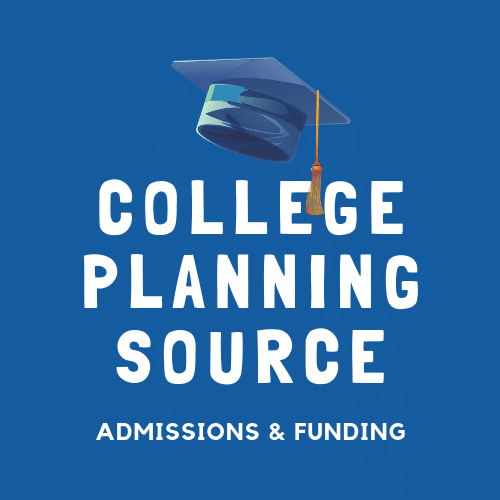The Importance of Early College Aid Planning
For many families in San Diego and across Southern California, paying for college is one of the largest financial commitments they’ll ever make. The earlier you begin college aid planning, the more opportunities you’ll have to maximize scholarships, qualify for grants, and minimize loan debt.
College aid planning isn’t just about filling out forms; it’s about creating a thoughtful strategy that combines savings, financial aid, and smart borrowing. The process involves understanding how colleges calculate need-based aid, which scholarships best fit your student’s strengths, and what financial tools can reduce your long-term costs.
When families plan early—ideally before senior year of high school—they gain access to more funding options, better loan terms, and a stronger sense of financial control over the college journey.
Understanding the Different Types of College Aid
Not all financial aid is created equal. A well-informed approach means understanding the major categories of aid and how they work together:
a. Scholarships
Scholarships are merit-based awards that don’t have to be repaid. They can come from colleges, private organizations, community foundations, or even employers. In Southern California, many local scholarships—such as those from the San Diego Foundation or California Retired Teachers Association—reward academic achievement, leadership, or community service.
b. Grants
Grants are need-based and also do not require repayment. The Federal Pell Grant and the California Cal Grant are two primary examples. Both require the FAFSA (Free Application for Federal Student Aid) or the California Dream Act Application for eligibility.
c. Loans
Student loans fill the gap between what aid and savings cover. Federal loans tend to have better terms than private loans, offering fixed interest rates and flexible repayment options. Proper planning ensures loans are used strategically—minimizing debt while preserving cash flow.
d. Work-Study Programs
Federal Work-Study programs allow students to earn money through part-time jobs, often on campus. These programs help offset expenses while developing real-world skills.

How to Build a Comprehensive College Aid Strategy
An effective college aid strategy involves blending multiple sources of funding while minimizing reliance on loans. Families should focus on three main pillars:
- Assessment: Evaluate your family’s financial situation and projected Expected Family Contribution (EFC). Tools like the FAFSA4caster or guidance from an advisor can help.
- Application Timing: Apply for aid early. California’s Cal Grant deadline is typically March 2, and missing it could mean losing out on thousands in potential grants.
- Diversification: Combine local, institutional, and national scholarships. Use databases like Fastweb or College Board’s Scholarship Search, but also research smaller community-based programs in San Diego and Orange County—where competition is lower.
By layering federal, state, institutional, and private aid sources, families can dramatically reduce total out-of-pocket costs.
Avoiding Common Financial Aid Mistakes
Even motivated families can make errors that cost them significant aid eligibility. Some common mistakes include:
- Filing FAFSA late or incorrectly: Many families wait too long or input inaccurate information, reducing their potential aid package.
- Not comparing financial aid offers: Colleges differ in how they award aid, even for students with identical profiles.
- Overlooking renewable scholarships: Some scholarships require annual reapplication or maintaining a specific GPA.
- Borrowing without a repayment plan: Taking loans without a clear understanding of repayment terms can lead to long-term financial strain.
Working with a professional financial aid planner helps families avoid these pitfalls and confidently navigate the complex aid landscape.

The Role of a College Aid Advisor in Southern California
In regions like San Diego, Orange County, and Los Angeles, where costs of living and income levels are high, college aid planning becomes even more nuanced. Many families find themselves earning too much to qualify for need-based aid, yet not enough to comfortably pay full tuition.
A college aid advisor bridges that gap by:
- Identifying colleges that are generous with merit aid.
- Analyzing financial documents to optimize aid eligibility.
- Helping families understand the true “net cost” of each school.
- Developing customized plans that integrate savings, grants, and responsible borrowing.
This personalized approach ensures that families don’t leave money on the table and make informed decisions about how to fund college efficiently.
Creating a Sustainable College Financial Plan
The goal of college aid planning isn’t just getting your child into college—it’s ensuring that your family remains financially stable before, during, and after graduation. A sustainable plan should consider:
- Long-Term Cash Flow: Ensure college payments align with your income and savings without jeopardizing retirement plans.
- Loan Repayment Scenarios: Project potential repayment timelines and monthly costs.
- Tax Advantages: Utilize education tax credits like the American Opportunity Credit or Lifetime Learning Credit.
- Contingency Plans: Maintain an emergency fund for unexpected tuition or living expenses.
With foresight and the right guidance, your college funding strategy can balance ambition with practicality—helping your student graduate with minimal debt and maximum opportunity.
Conclusion
College is a major milestone, but it doesn’t have to be a financial burden. Effective college aid planning empowers families to combine scholarships, grants, and loans into a balanced, achievable plan. For San Diego and Southern California families, local expertise and proactive planning can turn an overwhelming process into a manageable, strategic journey—ensuring every dollar works toward your child’s educational success.


